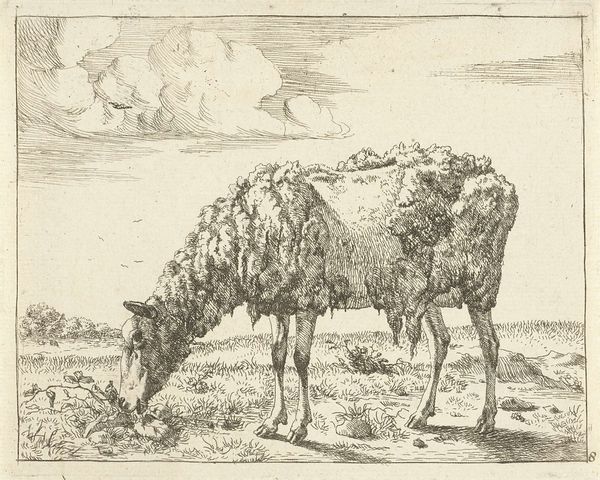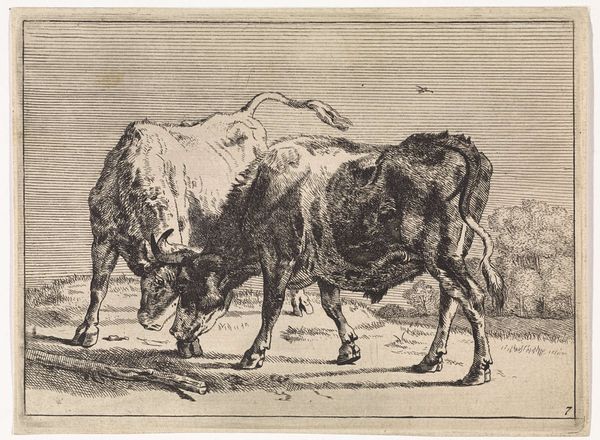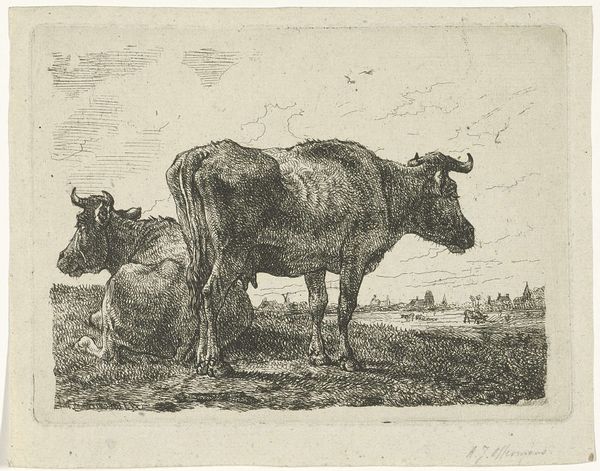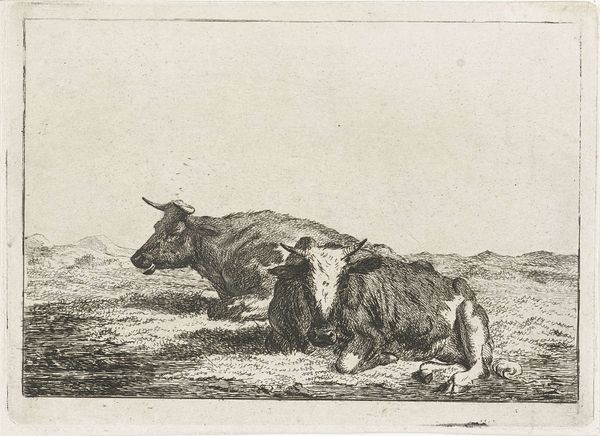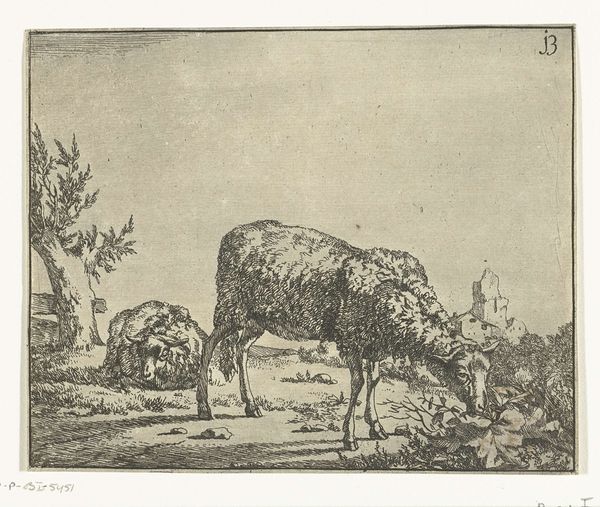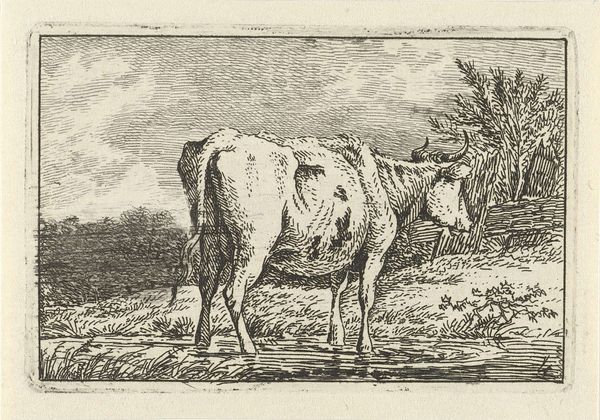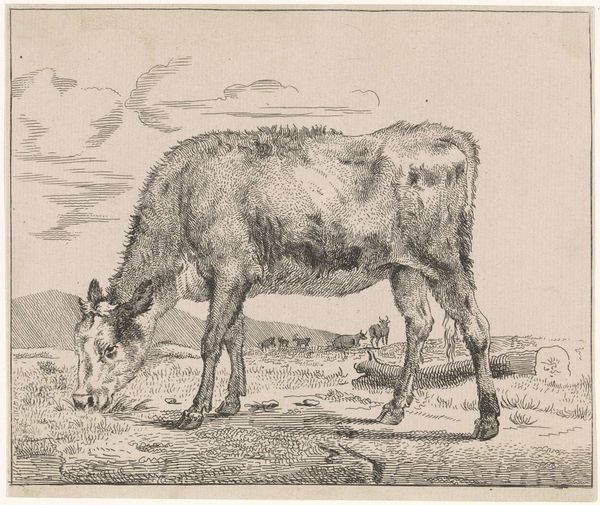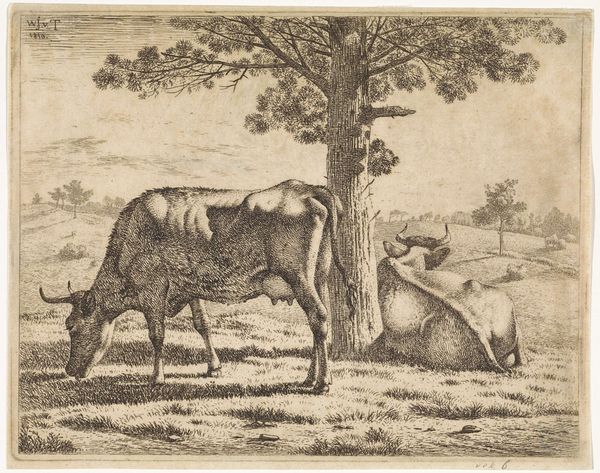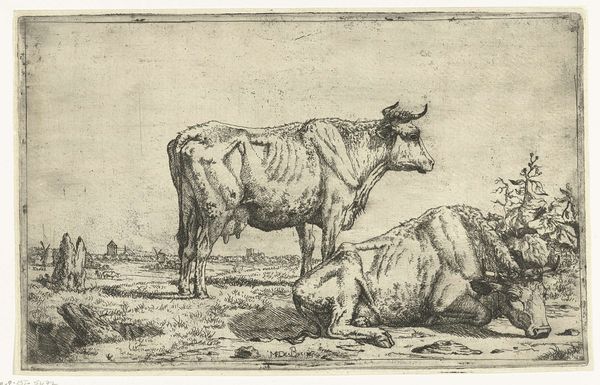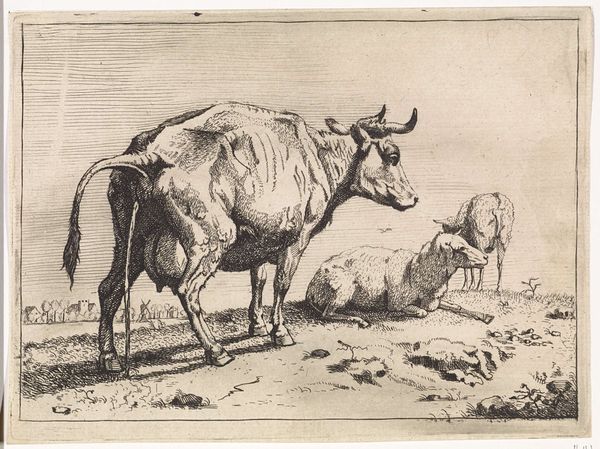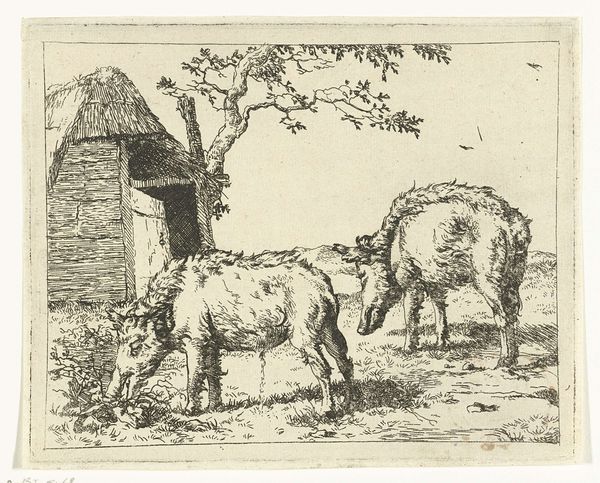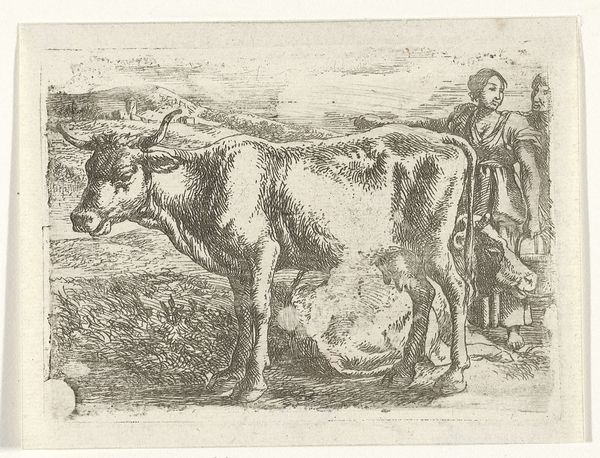
drawing, print, etching, graphite
#
landscape illustration sketch
#
drawing
#
quirky sketch
# print
#
pen sketch
#
etching
#
landscape
#
personal sketchbook
#
sketchwork
#
ink drawing experimentation
#
pen-ink sketch
#
graphite
#
sketchbook drawing
#
storyboard and sketchbook work
#
sketchbook art
#
realism
Dimensions: height 105 mm, width 131 mm
Copyright: Rijks Museum: Open Domain
Editor: This is "Grazend schaap naar rechts," or "Grazing Sheep to the Right," an etching by Wouter Johannes van Troostwijk, made sometime between 1792 and 1810. The simple, pastoral scene has a certain understated charm, a quiet observation of nature. What can you tell me about its symbols? Curator: Immediately, I notice the sheep itself. Consider its longstanding symbolic weight: gentleness, innocence, sacrifice. But there's also a rustic quality to this particular depiction. It is not idealized but captured in its natural state. How might that alter your reading? Editor: It becomes more of a study of rural life, perhaps even an attempt to capture a sense of authenticity that's missing in grander, more romanticized landscapes? Curator: Precisely! Van Troostwijk’s choice to depict the everyday carries meaning, hinting at changing values. Consider the burgeoning industrial revolution of that period, and the nostalgia for agrarian life that might arise as a consequence. Does this add another layer to the art? Editor: That definitely makes me see the sheep differently—less as a symbol and more as a record of something that was possibly vanishing. And the landscape feels almost secondary. Curator: It is as though the sheep has more weight than the setting. Troostwijk is showing you not just a landscape, but an important component that existed within it, making us aware of how integral these simple scenes are to our culture. Do you think our reading is colored by today’s social climate? Editor: Definitely. Thinking about today's concerns around agriculture and climate change, there is something profound about zooming in on a single, grazing sheep. I've learned so much more about art reflecting changing values and memory. Curator: And I am more acutely aware of how my symbolic interpretations need to remain open to re-evaluation in new contexts.
Comments
No comments
Be the first to comment and join the conversation on the ultimate creative platform.
